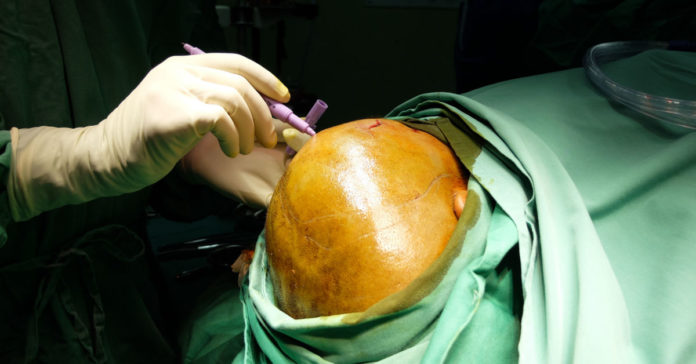Overview
There are many types of Brain surgeries. One of them is a craniectomy. It is a life-saving surgery that helps to relieve intracranial pressure due to swelling or bleeding. Patients with traumatic brain injury need craniectomy. In this procedure, the neurologist removes a part of the skull to reduce pressure and lower the chances of brain damage.
You must read this blog to get all the information about craniectomy, its procedure, risks, and recovery time.
What is a Craniectomy?
As mentioned earlier, it is a life-saving procedure performed on patients with traumatic brain injury. In this surgical procedure, a surgeon removes a part of the skull to reduce intracranial pressure, hypertension, or heavy bleeding inside the skull. Craniectomy also treats other conditions that lead to brain bleed or swelling.
Why Should a Patient Undergo Craniectomy?
The brain is one of the human body’s largest and most complex organs. It is also a delicate vital organ that needs several layers of protection. Usually, the skull protects and prevents the brain from injuries. But when the skull is injured, the tissue sac inside the brain, called the meninges, and the fluid in the meninges, known as cerebrospinal, gets affected.
It can lead to swelling in the brain and increase the fluid inside the skull. If the pressure and bleeding are not reduced, it may injure the brain tissue causing permanent brain damage. Apart from traumatic injury, there are several reasons for increased pressure on the brain, such as:
- Increased levels of cerebrospinal fluid – cerebral edema
- Bleeding or pooling of the blood into the brain. It is called intracranial hematoma.
- Head injury causing swelling
- Brain tumor
- Infection of the brain, including encephalitis or meningitis
- Increase in blood pressure or uncontrolled high blood pressure
- Stroke
- Brain aneurysm
- Blood clots in the arteries of the brain
- Brain arteries are blocked, causing dead tissues. This is known as cerebral infarction.
How is a Craniectomy Performed?
Before the surgery
As craniectomy is an emergency surgery, you may not be required to be prepared before the surgery.
Your doctor may conduct a physical examination and ask your family about your medical history. In the meantime, you will be sedated and, if required, on a ventilator. The team of doctors will also conduct a series of tests, including computed tomography (CT) scan of your head, a series of X-rays, and CT scans of your body. These tests help your surgeons provide complete and better information about your condition.
During the surgery
Neurosurgeons perform the craniectomy. At the start of the surgery, your doctor administers general anesthesia. A breathing tube is inserted through your throat to assist you in breathing effortlessly. The team will constantly monitor your vital signs, such as heart rate and blood pressure.
The neurosurgeon begins by shaving your hair from the area of the scalp to be operated on . An incision is made so that a flap of the skin is folded backwards to view the skull. As the next step, the neurosurgeon drills a hole in the skull to remove a piece of your skull. This helps relieve pressure from your brain. The piece of skull is either stored in the freezer or attached to your abdomen and, in rare cases, discarded. If needed, your doctor may make an incision in the membrane that surrounds the brain to perform any required repairs. Once the swelling is minimized, a mesh material is placed over the area, and your team of surgeons surgically closes the scalp.
Recovery Time After Surgery
Once the pressure has decreased in the brain, the surgeon covers the hole with the removed skull that was stored or may use a synthetic skull implant. This procedure is called cranioplasty.
However, your recovery time depends on your overall health and the severity of your condition. Your recovery may include wearing a helmet to protect your skull and brain from possible future damage to your head.
You may need to be hospitalized for a couple of weeks or more so that the doctors can monitor your health condition. Sometimes, patients may need rehabilitation for eating, speaking, and walking.
During the recovery stage, your doctor may advise that you avoid the following activities:
- Showering for a few days after surgery
- Lifting heavy objects
- Performing manual labor or exercising
- Smoking and drinking alcohol
- Driving any vehicle
What are the Possible Complications of Craniectomy?
Like any other surgery, craniectomy has its own risks and complications. These complications are based on the severity of the injury. The following are the possible complications:
- Long-lasting brain damage
- Accumulation of infected fluid in the brain
- Inflammation of the brain, known as meningitis
- Infection in the brain and spine
- Loss of speech
- Complete or partial body paralysis
- Persistent vegetative state
- Coma
- Brain death
Sometimes, you may experience complications years or months after surgery, such as:
- Accumulation of cerebrospinal fluid in the brain
- Hydrocephalus
- Occurrence of a cluster of symptoms, such as motor weakness, cognitive impairment, headache, and seizure.
Frequently Asked Questions (FAQs)
How do I know I have intracranial pressure?
Intracranial pressure is a severe medical condition that requires immediate medical attention. Several symptoms alert you about it. However, we may tend to mistake it for other health issues. But if you experience any of the following signs or these symptoms worsen over time, you must see your doctor immediately.
- Severe headache
- Confusion
- Vision problems
- Nausea and vomiting
- Sudden and unexplained changes in behavior
- Shallow breathing
- Weakness
- Trouble moving and speaking
- Excessive fatigue and sleepiness


















